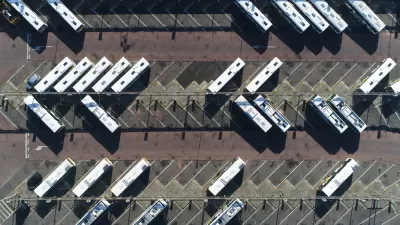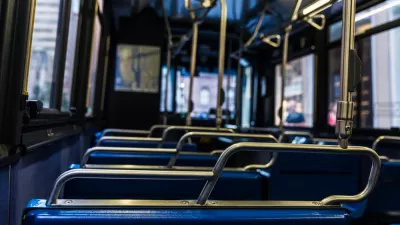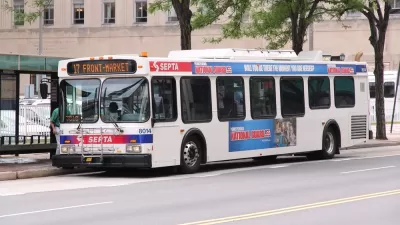Transit providers around the country are scrambling to find new sources of revenue to replace lagging ridership and reorienting their systems to a future less dependent on daily commuters.

According to an S&P Global Ratings report, which this month downgraded the public transit sector from stable to negative, “Some public transit operators face an operating fund fiscal cliff — especially if they are unable to identify new revenue sources or right-size operations reflecting lower expected ridership levels — once the federal assistance aid now compensating for diminished passenger fare revenues is depleted.” Dan Zukowski highlights the crisis in Smart Cities Dive, as major systems across the country struggle to find sources of funding as ridership remains low, particularly in cities with high rates of remote work. Meanwhile, other issues plague transit systems:
“Labor shortages are reflected in the signing bonuses they offer bus operators. Many agencies are looking toward major investments to electrify their bus fleets. And new approaches to better serve their communities have some agencies redesigning bus networks and trying alternative fare strategies, including fare capping, discounted fares and eliminating fares.”
Zukowski points to zero fare transit programs that have successfully boosted ridership in their cities, noting that free fares can reduce agencies’ operational costs by eliminating the need for collection mechanisms and enforcement. Ultimately, finding revenue sources other than fares, such as congestion pricing programs, might be essential to the survival and effective operations of U.S. transit agencies.
FULL STORY: To close budget gaps, transit agencies face hard decisions in 2023

Alabama: Trump Terminates Settlements for Black Communities Harmed By Raw Sewage
Trump deemed the landmark civil rights agreement “illegal DEI and environmental justice policy.”

Planetizen Federal Action Tracker
A weekly monitor of how Trump’s orders and actions are impacting planners and planning in America.

The 120 Year Old Tiny Home Villages That Sheltered San Francisco’s Earthquake Refugees
More than a century ago, San Francisco mobilized to house thousands of residents displaced by the 1906 earthquake. Could their strategy offer a model for the present?

Ken Jennings Launches Transit Web Series
The Jeopardy champ wants you to ride public transit.

BLM To Rescind Public Lands Rule
The change will downgrade conservation, once again putting federal land at risk for mining and other extractive uses.

Indy Neighborhood Group Builds Temporary Multi-Use Path
Community members, aided in part by funding from the city, repurposed a vehicle lane to create a protected bike and pedestrian path for the summer season.
Urban Design for Planners 1: Software Tools
This six-course series explores essential urban design concepts using open source software and equips planners with the tools they need to participate fully in the urban design process.
Planning for Universal Design
Learn the tools for implementing Universal Design in planning regulations.
Clanton & Associates, Inc.
Jessamine County Fiscal Court
Institute for Housing and Urban Development Studies (IHS)
City of Grandview
Harvard GSD Executive Education
Toledo-Lucas County Plan Commissions
Salt Lake City
NYU Wagner Graduate School of Public Service





























